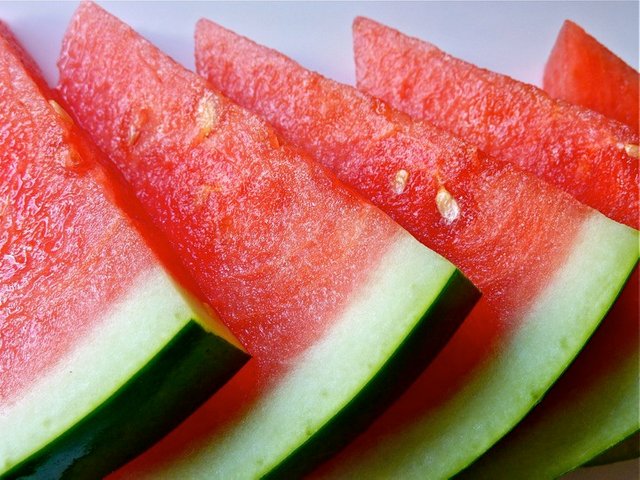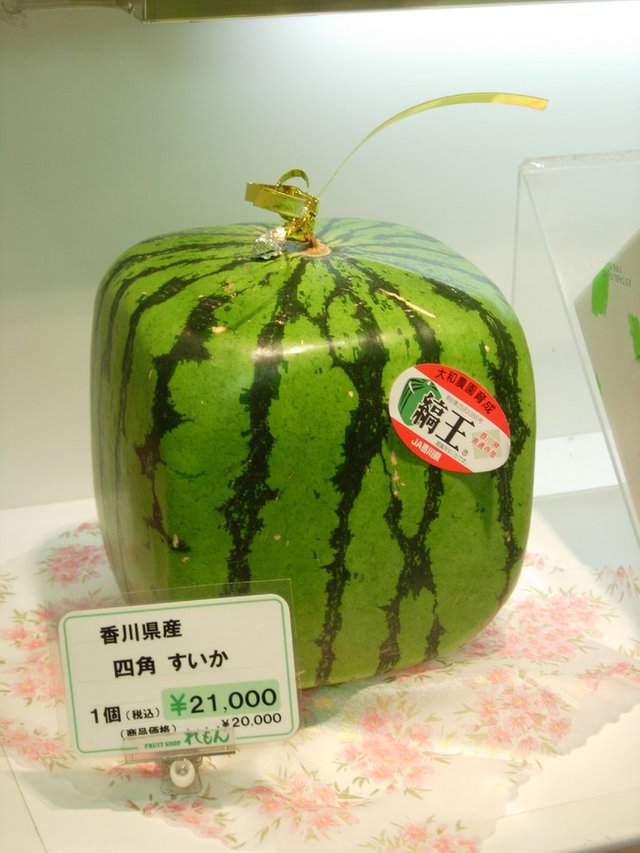Watermelons: Health Benefits, History, and the Contemporary Industry
Proper hydration is one of the simplest and most essential steps to a healthier body. Unsurprisingly, daily hydration levels are a significant factor in mental and physical performance, affecting mood, concentration, headache frequency, and fatigue. Longer term effects of dehydration may include constipation, kidney stones, and weight gain via decreased metabolism and increased appetite.

All of this is relatively common knowledge, yet many of us still find proper hydration habits difficult to maintain. Enter the watermelon, the delicious fruit that can provide our most necessary compound, along with several other essential vitamins and minerals. Ripe watermelons contain approximately 91% water. Tending to weigh from eight to twelve kilograms, it is clear that each fruit contains a massive amount of edible water. Moreover, they are low in sugar content compared to other fruits (six percent), so they serve the same low caloric filler function as water. It is much more than just a substitute snack or glass of water, though. Like many fruits, watermelons contain high levels of vitamin C, an antioxidant that assists in collagen production and reduces free radical formation, making it good for your skin and bad for any potential carcinogenic cells. Its fibre helps regulate digestive processes, and amino acids such as L-citrulline make it good for reducing lactic acid buildup.
Medical benefits aside, watermelons are undeniably one of the best fruits on a hot summer day. Watermelon juice is one of the lighter fruit juices, the kind you might find yourself drinking by the glass rather than in the more measured portions of other, more citric juices. Its light flavor makes it an ideal main component in mixed fruit salads, and even allows it to pair well with vegetable and seafood dishes. Finally, a watermelon can serve as a light dessert on its own, or be made into more elaborate desserts such as popsicles when frozen.
Mark Twain, author of Tom Sawyer and The Adventures of Huckleberry Finn, and a general distributor of 'hard truths' and simple pleasures, had nothing hard to say about the watermelon, exclaiming:
The true Southern watermelon is a boon apart, and not to be mentioned with commoner things. It is chief of this world'd luxuries, king by grace of God over all the fruits of the earth. When one has tasted it, he knows what the angels eat. It was not a Southern watermelon that Eve took: we know it because she repented.
The modern watermelon, Citrullus Lanatus, is believed to have originated in southern Africa, though the fruit has such a long history of human cultivation that it is difficult to accurately trace. Texts and images date it back at least 5000 years to ancient Egypt. It is unsurprisingly related to cantaloupes and other melon fruits, but also to certain vegetables, namely cucumbers, pumpkins, and zucchinis. This grey area between fruit and vegetable (the watermelon was actually named the official vegetable of Oklahoma in 2007) also accounts for the difficulty in accurately tracing the fruit's history; it is difficult to reconcile the indigenous, small, and sour fruits found in southern and western Africa—where many genealogies trace the modern watermelon—with the succulent melons that are grown across the globe today.
Today's global market has created over fifty different types of watermelons, suitable for various climates and palettes. A look into the modern hegemons of watermelons offers some insight into its global culinary ubiquity. As with many industries, China leads the world in watermelon production by a significant distance, with about 70 billion kilograms grown in 2012.
The next countries by tonnage produced illustrates the distance the Chinese market has on the rest of the world; Iran and Turkey, second and third on the list, produce about 4 billion kilos each. Unlike non-perishable industries, however, their consumer base is very domestically oriented; the countries leading in global production occupy the same position in terms of consumption, and in very similar percentages (China 68%, Turkey and Iran 3%, Brazil and Egypt 2%). The peculiarity of this is more clear when compared to China's overall private consumption to its 2017 GDP. Households spend only 39% of GDP, confirming its priority of production over consumption, a condition that typically points to an export economy. On the other hand, per capita watermelon consumption in the top three producers tells a different story—in China, the average person has been estimated to eat almost 55kg of the fruit every year.
The numbers are not much lower in the two following production centres, Turkey and Iran, but Brazil and Egypt are much closer to the estimated global annual consumption amount of 8.5 kilos per person. Both of these countries provide a significant percentage of their exports to European countries. Unsurprisingly, it is largely a summer market, and prices per kilo fluctuate significantly over the course of a year. The United States is sustained by its domestic crop from May to November, outside of which it imports from Central American countries such as Guatemala and Honduras. Again, demand in off season months is also less than during the hot summers. Chinese consumption remains consistently high throughout the year. The most popular agricultural regions are in Shanxi, Shandong, and other north-eastern provinces, which are also subject to seasonal climates, so winter melons come either from Hainan, a large Chinese tropical island off the coast of northern Vietnam, or Myanmar, which is estimated to provide up to 80% of the off season crop.
Finally, a few recent novelty watermelons deserve mention. The Seedless watermelon was conceived in the 1990's. Other seedless fruits are typically made by grafting the cuttings from preexisting plants to form new ones, but the seedless watermelon is grown from a cross of two chromosome alignments (diploid and tetraploid). The resultant triploid fruit contains three sets of chromosomes. The odd number of chromosomes means that when the sets are split and mixed (via floral pollination) with another DNA, they will very likely produce an unsustainable 3-chromosome seed, which stops growing quickly after fertilisation. Seedless melons, therefore, actually do contain seeds, but they are small and translucent, hardly distinguishable from the pulp.

Square (or cube) watermelons have long been available in Japanese supermarkets--their angular shape allows them to fit into smaller refrigerators easier than larger, oblong melons. The melons are grown in glass containers and take on their shape.The convenience comes at a price though; difficulties in mass-production make them significantly (double and sometimes even triple) more expensive than their rounded counterparts, at least double or triple the price.
Watermelon's isolated markets make it a highly variable fruit in terms of pricing and accessibility, but luckily they are best enjoyed in the summer season, when they are most available. The marriage of supply and demand adds yet another virtue to the fruit's already extensive catalogue.
If you're looking for some thirst quenching watermelon water you can buy also pre-packaged and in a more portable form than the Japanese square watermelon.
Congratulations @assembleitmedia! You have received a personal award!
Click on the badge to view your Board of Honor.
Congratulations @assembleitmedia! You received a personal award!
You can view your badges on your Steem Board and compare to others on the Steem Ranking
Vote for @Steemitboard as a witness to get one more award and increased upvotes!